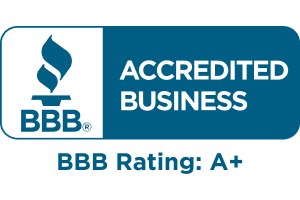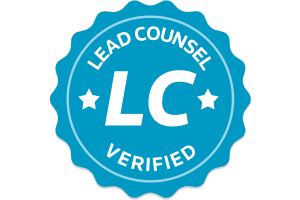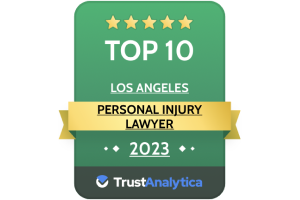- Free Consultation: 866-966-5240 Tap Here To Call Us
Navigating a Lyft Accident Claim in Los Angeles
A comprehensive guide for injured passengers, drivers, and third parties
If you or a loved one was injured in a crash involving a vehicle operated by Lyft in Los Angeles, the legal and insurance landscape can feel especially complex. Between rideshare driver-status questions, layered insurance policies, and California laws unique to these platforms, knowing your rights—and how to assert them—can make all the difference. This blog outlines key steps, insurance issues, liability considerations, common pitfalls, and how a seasoned law firm such as VictimsLawyer.com can assist you in recovering full and fair compensation.
What makes Lyft accident claims different in California & Los Angeles
Rideshare status and insurance “periods”
Unlike a typical car accident, injuries in a Lyft crash often trigger multiple layers of insurance depending on the driver’s status at the moment of the collision. According to California law and case-law:
- If the driver’s app was off (not logged into Lyft or not in “driver mode”), then the driver is considered to be using the vehicle for personal use and their personal auto insurance is the primary coverage. (PARRIS Law Firm)
- If the driver is logged in, the app is on, but the driver has not yet accepted a ride (no passenger onboard), then limited rideshare coverage kicks in (often as secondary to personal insurance). (Montgomery Steele Law)
- If the driver has accepted a ride or has a passenger onboard, then full rideshare commercial insurance applies (often up to $1 million in liability/uninsured motorist coverage) for third parties and passengers alike. (Shouse Law Group)
Because of these “periods,” establishing exactly when the crash occurred relative to the Lyft app’s status is a key evidentiary point.
Los Angeles context
- The rideshare market in Los Angeles is massive. As one attorney noted, in one year the number of Lyft riders in L.A. reached ~23 million. (Steven M. Sweat)
- That means more potential accidents involving Lyft vehicles, and thus more claims where specialized knowledge is critical.
- Local traffic, congestion, and rideshare use patterns mean that many Lyft accidents involve complex facts: multiple vehicles, rideshare app status, and shared fault issues.
Why you need to treat a Lyft crash differently
- Insurance coverage limits and availability vary depending on app status (see above).
- Liability may involve not just the Lyft driver but also the at-fault third party, Lyft’s insurer, uninsured/underinsured motorist (UIM) coverage, and potentially other sources. (Haffner Law)
- Fault allocation matters: California is a comparative-fault state (you can recover even if you share fault, but your award is reduced). (Feher Law Firm)
- Statute of limitations: You generally have two years from the date of the accident to file a personal injury lawsuit in California. (DP Injury Attorneys)
- Documentation, evidence collection, and timely reporting are essential because of the commercial/contract arrangements involved.
Step-by-step: What to do if you’re injured in a Lyft accident in Los Angeles
Here’s a recommended roadmap:
1. Seek immediate medical care
Regardless of how minor injuries appear, you should get a medical evaluation as soon as possible. Why?
- Some injuries (e.g., internal trauma, concussion, soft-tissue injuries) may not show full symptoms immediately.
- A medical record connects your injury to the accident and becomes essential evidence for your claim.
- Delays in treatment may be used by the insurance company to argue your injuries pre-existed or worsened from another cause.
2. Preserve evidence at the scene
- Take clear photographs of the vehicles, damage, position, skid marks, road conditions, traffic signs, lighting, etc.
- Obtain the Lyft driver’s name, contact info, Lyft trip details (if a ride was in progress), and insurance information (if available).
- Get the at-fault driver’s details if another vehicle was involved.
- Collect contact info from witnesses and ask if anyone captured dash-cam or smartphone video.
- Ensure a traffic/police report is filed and keep a copy.
3. Report the accident to Lyft (and if applicable the driver’s insurer)
- Use the Lyft app’s “Report an accident” feature to notify Lyft of what happened. Failure to do so may hamper your ability to access Lyft’s insurance coverage. (Peeralilaw)
- Notify the at-fault driver’s insurance company (or your own, if you’re a third-party victim).
- Your attorney can handle these notifications and ensure deadlines are met.
4. Determine which insurance coverage applies
Some key questions your attorney will run through:
- Was the Lyft driver logged into the app at the time of the crash?
- Did the driver accept a ride or have a passenger onboard?
- Who is legally at fault? The Lyft driver? Another driver? A pedestrian or bicyclist?
- Does the at-fault party have adequate insurance, or will you need to tap Lyft’s uninsured/underinsured motorist (UIM) coverage? (Walch Law)
- Are there any third-party liability exposures (for example: another driver ran a red light, defective vehicle part, a pedestrian caused the crash)?
- What are the damages you are eligible to claim (medical bills, lost wages, pain & suffering, future care, property damage)?
- What statute of limitations applies?
5. Quantify your damages
Damages in a Lyft crash case may include:
- Medical expenses: past, present, and future (e.g., surgeries, therapy, hospital stays).
- Lost wages/income: for time unable to work; if you were a Lyft driver yourself, this may include lost earning capacity.
- Future earning capacity loss: if injuries reduce your ability to work in the future.
- Pain and suffering, emotional distress, loss of enjoyment of life.
- Property damage: vehicle repairs or replacement, other personal property.
- Special damages: e.g., out-of-pocket costs, home modifications, caretaker expenses.
6. Negotiate with insurers / build your case
- Your attorney will send demand letters to the insurer(s) explaining liability, injuries, losses, and requesting compensation.
- Early settlement offers are common but insurers may low-ball because of the rideshare complexity.
- If a fair settlement cannot be reached, the next step is filing a lawsuit before the statute of limitations expires.
7. File suit if necessary and litigate
- In California you generally have two years from the injury date to file a personal injury lawsuit. (DP Injury Attorneys)
- Litigation may include written discovery, depositions, expert witnesses (e.g., accident reconstruction, medical experts), settlement conferences, and possibly trial.
- Throughout, your attorney will protect your rights, keep you informed, and fight for maximum compensation.
8. Settlement or verdict and case resolution
- Once you accept a settlement or obtain a verdict, you’ll sign release documents and your attorney handles disbursements (including lien resolution, medical bills, attorney fees).
- You should receive a final distribution sheet explaining what you received and what expenses were paid out of the recovery.
Common issues and pitfalls in Lyft accident claims
Determining Lyft driver app status
Insurers and Lyft may dispute whether the driver was logged in, had accepted a ride, or had a passenger. The application status affects whether full rideshare coverage applies or only limited/ personal coverage. (Avrek Law Firm)
Failure to establish the correct status may limit available coverage.
Multiple insurers and policy limits
- Lyft’s “full” coverage often provides up to $1 million in liability and uninsured/underinsured motorist (UM/UIM) coverage when a ride is in progress. (Shouse Law Group)
- When the driver’s app is off or waiting for a ride, coverage may drop to as little as $50,000 per person / $100,000 per accident. (Law Offices of Michael A. Kahn)
- If the at-fault driver’s personal insurance is minimal (e.g., the typical 30/60/15 limits in California), the victim may need to access Lyft’s UIM coverage. (Walch Law)
- Sometimes multiple parties share liability (for example the Lyft driver and another driver) and apportioning fault becomes tricky.
Shared fault (comparative negligence)
In California, if you share fault for the accident—even 10%—your recovery is reduced accordingly. For example, if you have a $100,000 settlement and are 10% at fault, you get $90,000. (Feher Law Firm)
Don’t assume you can avoid this just because you were a passenger—fault can exist for third-parties too (e.g., your actions, vehicle loading, distracted behavior). So careful investigation is needed.
Dealing with rideshare company tactics
- Insurers may attempt to delay payments, dispute injuries, or push you to accept a low settlement quickly. (M&Y Personal Injury Lawyers)
- Claims against Lyft may be denied if the driver’s app was off or if you fail to report the accident in the required time.
- Evidence (e.g., Lyft’s log-files, GPS data, driver logs) may need to be subpoenaed—not always obvious to a self-represented claimant.
Complex injury and future damages
Serious crashes involving Lyft vehicles (especially with high speed or multiple vehicles) may yield catastrophic injuries (traumatic brain injury, spinal cord injury, amputations). These demand thorough future-care analysis, life-care plans, vocational impact, and expert testimony. (Melinda J. Helbock, A.P.C. San Diego)
If your attorney lacks experience in rideshare or catastrophic injury, you risk undervaluing your claim.
Statute of limitations and deadlines
As above, two years is the general limit in California. Missing this window can destroy your claim. (DP Injury Attorneys)
Also note deadlines for reporting to Lyft or submitting demand letters—missing those may weaken your case.
What to expect regarding compensation/settlement amounts
While each case is unique, data and trends can help set expectations.
Settlement range
- One source reports minor Lyft passenger injuries in California may settle between $10,000 and $50,000, while more severe cases can push beyond $100,000. (Wells Call Injury Lawyers)
- Another firm’s summary notes for California: minor accidents ~up to $25,000; major accidents may reach ~$1 million. (LawLinq)
- Some box-settlement headlines (though not always confirmed) have reached multi-million dollar recoveries. (Melinda J. Helbock, A.P.C. San Diego)
Key variables influencing amount
- Severity and permanency of injury (e.g., TBI, paralysis, long-term care needs).
- Clear negligence by the at-fault party (e.g., reckless Lyft driver, another car’s fault).
- Availability of high insurance limits (e.g., Lyft’s $1 million coverage or other policy).
- Strong documentation of damage: medical bills, lost wages, future care.
- Ability to show lost earning capacity and diminished lifestyle.
- Low shared fault percentage.
- Timing and presentation of the claim: early, well-supported claims often yield better results.
- Willingness of the claimant to negotiate vs. litigate.
Realistic advice
- If you suffered a “moderate” injury (hospitalized but expect full recovery), a settlement in the tens to low hundreds of thousands is realistic.
- If you suffered a catastrophic injury, likely life-long treatment, then a settlement could reach hundreds of thousands to > $1 million.
- Be cautious of “average” figures—they often depend on many factors outside your control. Use them only as a rough benchmark.
Why hiring a law firm like VictimsLawyer.com matters
If you are facing a Lyft accident claim in Los Angeles, working with a law firm experienced in rideshare and serious injury claims offers significant benefits:
- Understanding of rideshare insurance mechanics – A firm like VictimsLawyer.com (see their Los Angeles Lyft Passenger Injury Attorney page) specifically discusses these types of claims. (Steven M. Sweat)
- Access to discovery tools – They can demand Lyft’s logs, driver app status, GPS data, insurance certificates, etc.
- Accurate valuation – They will work with medical experts, vocational specialists, economists to value future damages, not just past expenses.
- Skilled negotiation – Insurers for Lyft and other parties know these cases can get expensive—they often delay or under-offer. A seasoned attorney can push back effectively.
- Litigation readiness – If a settlement isn’t fair, you need a law firm ready to file suit and take it to trial if necessary.
- Maximizing your net recovery – They’ll help manage liens, medical providers, subrogation, and ensure you don’t lose funds to avoidable fees or costs.
- Peace of mind – After a crash you’re healing, dealing with medical care, possibly dealing with lost income—all while an attorney handles the legal side.
Frequently Asked Questions
Can I file a claim if I was in the Lyft car as a passenger?
Yes. If you were riding in the Lyft at the time of the crash, you likely have a claim against the at-fault party and possibly Lyft’s insurer or the Lyft driver’s personal insurer, depending on circumstances. (Steven M. Sweat)
Make sure your attorney determines the exact app-status to know which insurance bucket applies.
What if I was a third-party (not the Lyft passenger) hit by a Lyft vehicle?
Yes—you can file a claim. The same questions apply: Was the Lyft driver logged in? Did they have a passenger? Was the Lyft driver at fault or was the other driver? Your claim may involve the Lyft driver’s personal insurance or Lyft’s commercial policy. (Shouse Law Group)
What about a Lyft driver who was injured in a crash while driving for Lyft?
Lyft drivers also have rights. Their claim will involve different issues (lost income, future earning capacity, etc.). (Oaks Law Firm)
How long do I have to file a lawsuit?
In California, the standard statute of limitations for personal injury is two years from the date of injury. Waiting too long may forfeit your legal rights. (DP Injury Attorneys)
What if I share some fault for the crash?
You can still recover, but your award will be reduced proportionally by your percentage of fault. Example: If you are 10% at fault and total damages are $100,000, you may recover $90,000. (Feher Law Firm)
How much is my case worth?
It depends. Using published benchmarks: minor injuries might yield $10K-$50K; major injuries can reach $100K+ or up to a million in catastrophic cases. (Wells Call Injury Lawyers)
Do I have to accept the first settlement offer?
No. Insurers often make early, low offers hoping claimants (especially injured and stressed) will accept. You have the right to negotiate, present full evidence, and if necessary, reject and file suit. Having an attorney helps you evaluate offers properly.
Case Study Overview (Hypothetical)
This is for illustration only; every case is unique.
Facts:
- A Lyft driver accepted a ride in Los Angeles. He picked up a passenger, then rear-ended another vehicle at a stoplight.
- The passenger suffered moderate injuries (fractured wrist, concussion symptoms, 3 months of physical therapy) and had lost 6 weeks of wages.
- Lyft’s records show the app was “on” and ride accepted at the time of crash. The at-fault driver personal policy has minimum limits (30/60/15).
- The Lyft driver’s personal insurer is exhausted; Lyft’s commercial policy of $1 million liability/UM applies.
What a law firm would do:
- Secure Lyft’s app-logs, driver records, insurance certificate.
- Collect medical records, wage loss documentation, therapy costs, future care prognosis.
- Demand settlement from Lyft’s insurer.
- Evaluate whether fault is clearly on the Lyft driver (or if the other driver bears fault).
- Prepare demand letter, negotiation, possibly mediation.
- If fair settlement not reached, file suit before expiration of limitations.
- Continue discovery, expert depositions, settlement conference, trial if needed.
Potential settlement ballpark:
Given moderate injuries, personal loss of income, Lyft’s high-policy, and no significant shared fault, settlement might range from $150,000 to $400,000 depending on future care needs and pain/suffering.
Tips for Potential Clients
- Act quickly. Evidence is perishable: app-logs may be overwritten, driver may change status, witnesses forget.
- Don’t give a recorded statement to the insurer without consulting your attorney. Insurers often record statements to use later.
- Be honest and thorough with your attorney about all injuries, impacts, and prior health conditions. They need the full picture.
- Keep copies of everything: medical bills, diagnosis papers, wage statements, the Lyft ride receipt, any correspondence.
- Don’t assume Lyft will automatically pay. The app-status question and insurance coverage levels complicate things; you still need legal advocacy.
- Consider future losses. If your injury may affect your ability to work, engage a law firm who knows how to value future earning capacity.
- Avoid signing anything (other than medical releases to your doctors) before consulting an attorney. Early release could waive your rights prematurely.
- Choose a law firm with rideshare/Los Angeles experience. Many “car accident” attorneys don’t understand the Lyft-specific insurance and liability issues.
Why VictimsLawyer.com is a good choice
- Their materials explicitly reference Lyft passenger injury claims in Los Angeles. (Steven M. Sweat)
- They are likely familiar with the layered insurance issues in rideshare accidents and the unique demands of these claims in L.A.
- Using a firm that focuses specifically on injured parties (victims) ensures your interests are prioritized (not the insurer’s).
- They can provide free case evaluations, guide you through the complexities, and explain your rights clearly.
Final Word
If you’ve been injured in a Lyft accident in Los Angeles, you don’t have to navigate the process alone. The combination of rideshare driver status, layered insurance, and the magnitude of potential damages makes these cases more complex than ordinary car crashes. With the right approach—immediate medical attention, preservation of evidence, prompt legal counsel, and aggressive advocacy—you can position yourself for the compensation you deserve.
For a detailed consultation and to explore your legal options, reach out to a firm like VictimsLawyer.com who understand Lyft-related claims in California. Time is of the essence, so don’t wait to protect your rights.
Useful link:
VictimsLawyer.com – Los Angeles Lyft Passenger Injury Attorney












